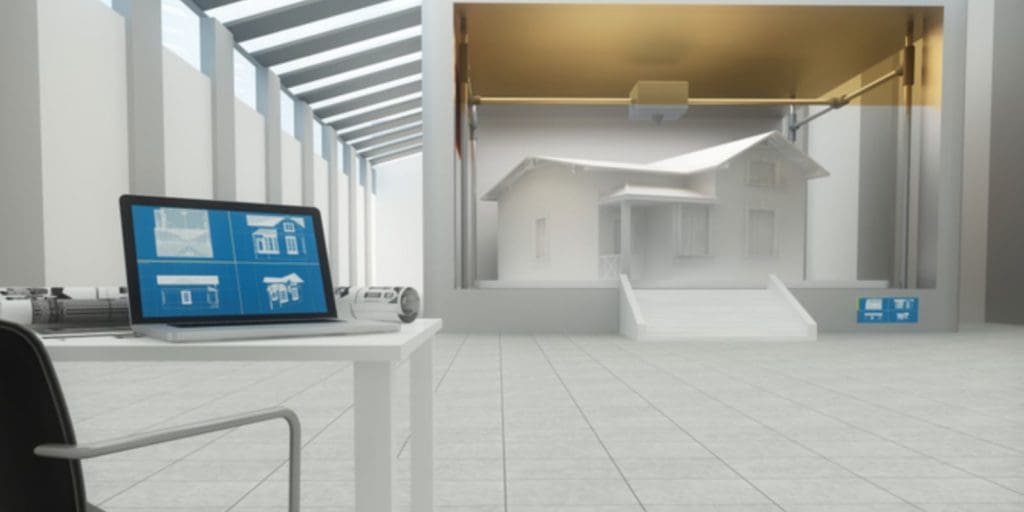It is well known that across both Wales and England, there is a housing shortage. According to the Welsh Government, approximately 14,000 new homes are required every year for the next 15 years to meet housing demands. Running alongside the crisis is the onset of global digital transformation. Could modern technology therefore be the answer? Could services like ProtoLabs 3d printing be the linchpin in helping to solve the current housing conundrum? We consider some of the advantages of 3D printing homes to address the challenges.
It can lower building costs
Although we are at the stage where the cost of equipment for industrial sized 3D printing is relatively high, overtime, these costs are likely to fall and the technology will become more accessible. In the same way other 3D printed objects are created, a digital file created using CAD software is used for the design of the house which is then built using layers of material, one after the other. Conventionally built homes usually take several weeks and sometimes months to construct, and often involve several construction workers coming on site every day. With 3D printing, some houses can take just a few days to create, and only need the support of 3 or 4 people to monitor the build and operate the necessary equipment. Put together, these factors equate to the potential to massively reduce home building costs.
It can accelerate construction
The housing shortage means that there is a need to build more homes – fast. As mentioned, this can be cut significantly with the help of 3D printing (additive manufacturing). Take for instance this 3D printed home in the US which was built by non-profit, Habitat for Humanity in just 28 hours. The organisation, which aims to make owning a home more accessible, built the house with the help of Alquist 3D using an industrial sized 3D printer and concrete instead of wood and timber. In another example, a house constructed by Icon using 3D printing was made in 47 hours – the home in Texas was the first 3D printed house in America.
There is a reduced need for construction workers
Due to the automation capabilities of 3D printing, there are only a few operators needed to manage it. Traditional housing construction sites require several labourers throughout the building process, which usually takes several months to complete. These workers upload materials, transport these materials, lay bricks, mix cement and install fixtures and fittings internally. However, almost all of these necessary tasks are not required with 3D printing construction. Workers will need to be present on-site to monitor the machinery and oversee the construction, but the labour-intensive tasks are removed. As well as the reduction in labour costs, this also dramatically diminishes the likelihood of on-site accidents. At present, the construction industry is known as one of the main sectors where serious and fatal injuries occur. According to the UK Health and Safety Executive, approximately one quarter of fatally injured workers in 2020 and 2021 (totalling around 30 deaths) worked in construction.
It brings greater design innovation possibilities
3D printing presents a whole new world of opportunities for home design. Typically, houses with curves or intricate designs have greater costs involved, because the shapes are harder to achieve with standard processes. More unusual shapes e.g., curved walls are created just as easily as straight ones with 3D technology. This makes a big difference to the design opportunities both inside and outside homes of the future. Materials can be highly customised too – check out this 3D printed freeform house with curves.
They can support sustainability efforts
One of the key advantages of 3D printing houses in the future is that recyclable materials can be used. This means the technology has the potential to help with the global drive for sustainability. At the moment, the construction industry is thought to generate around a third of the world’s waste. This waste typically ends in landfill. However, as an additive form of manufacturing, 3D printing produces little to no surplus waste. It therefore has the potential to reduce scrap and minimise the need for the transport of materials during construction. Overall, this significantly reduces the carbon footprint related to housing development.
Conclusion
The current global housing situation is predicted to affect around 1.6 billion people by 2025 as reported by the World Bank. In parallel, the 3D printing construction market has been growing steadily over the years. Although today we usually only see 3D printed homes as proof-of-concept there is scope for more innovation in the future. Innovation that has the potential to address ongoing global housing shortages. There is still some way to go with 3D printing construction in terms of standards and regulations. However, many are confident that the technology will play a key role in getting new homes built quickly and effectively in the future.

